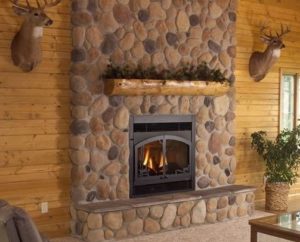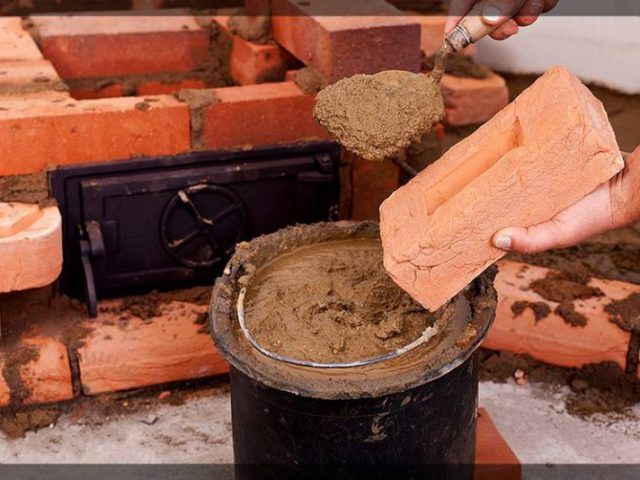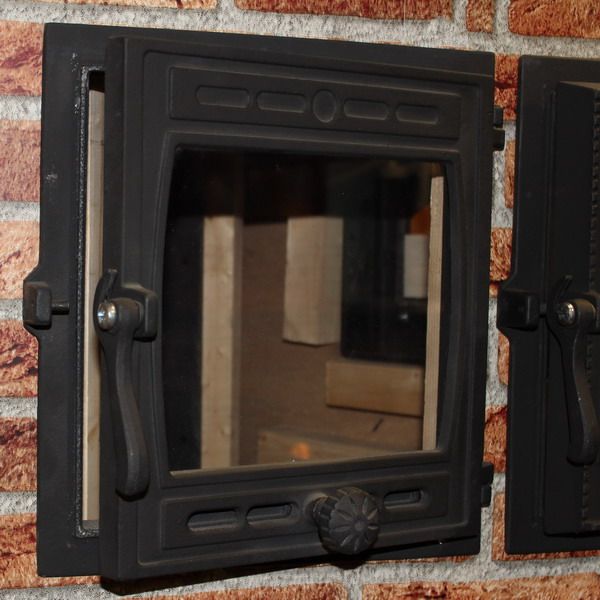Plastering a brick oven with your own hands
 Of course, every user of a popular heating device wants it to fit into the overall interior of the room. To do this, it is possible to cover it using various materials. The assortment will be based solely on the personal preferences and abilities of the owners. Do-it-yourself finishing of stoves with ceramic tiles in a private house requires having certain knowledge, just like that same, as well as plastering. For inspiration you can see the photo. However, it is worth considering some nuances. They and the entire process will be discussed in this article.
Of course, every user of a popular heating device wants it to fit into the overall interior of the room. To do this, it is possible to cover it using various materials. The assortment will be based solely on the personal preferences and abilities of the owners. Do-it-yourself finishing of stoves with ceramic tiles in a private house requires having certain knowledge, just like that same, as well as plastering. For inspiration you can see the photo. However, it is worth considering some nuances. They and the entire process will be discussed in this article.
The content of the article
Selection of material for lining the furnace
In order for the work to be carried out expediently, it is advisable to understand what fittings you will interact with. Moreover, you should pay attention to certain points when the topic concerns the choice of products. For example, when choosing ceramic tiles, you need to consider the following:
- The most important thing is environmental safety. It is necessary to have a special certificate.
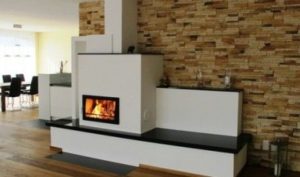 Appropriate size and shape. If you follow the recommendations, it is best to purchase small-sized tiles. This is explained by the fact that at small parameters less delamination is guaranteed.As for the second aspect, you should choose simple products so as not to put in maximum effort. But if you want a pattern, then the installation method will be much more complicated.
Appropriate size and shape. If you follow the recommendations, it is best to purchase small-sized tiles. This is explained by the fact that at small parameters less delamination is guaranteed.As for the second aspect, you should choose simple products so as not to put in maximum effort. But if you want a pattern, then the installation method will be much more complicated.- Specifications. These include both strength, resistance to stressful situations, and the level of moisture absorption with the coefficient of thermal expansion. In addition, it is important that the properties of products include fire resistance and reliability.
- In addition to mandatory indicators, there are also indirect ones, but no less important. For example, the correspondence between the interior and the shade of the material.
In addition, you should purchase the following components:
- Plaster.
- Primer solution for treating walls.
- Specially designed tile adhesive (heat resistant).
- Grout mixture. It will be needed when rubbing seams.
ATTENTION! Before purchasing a tile, it is advisable to choose a plus/minute 5-10 reserve. Since no one is protected from defective products and operational errors.
Design development
It is very important to pay attention to this issue in advance. The answer will depend on what kind of interior you choose. He considers the image of Russian cuisine quite popular. In this case, a rustic style is used, where you can notice a slightly rough surface finish. But the description does not end there. Everything is influenced solely by the imagination of the master. Therefore, there may be a variety of options for arranging a room and completely different from the seemingly familiar accusations for society.
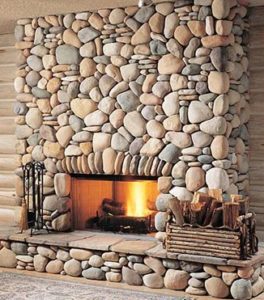
For self-construction, the brick type of installation is also in demand. But, as a rule, no additional cladding is used with it, since it itself is considered the main element of decoration. Despite this, finishing will still need to be done so that the material can be used for many years to come. As for other design options, it is covering the structure with tiles or stones. But it is worth remembering that the final result will always be affected by your abilities and how difficult the path you chose to achieve your goal.
Plaster for facing a stone stove
Plastering a brick stove with your own hands is considered the simplest and easiest way to transform the appearance of a structure.
ATTENTION! Before starting the work process, it is necessary to maintain a certain period of one month so that the entire structure has time to settle. After this period has passed, you can safely proceed to further actions.
They present a special sequence in preparation:
- Eliminate all possible dirt and dust.
- Create a uniform surface by priming.
- Deepen all seams.
- Using a fine-grained mesh, cover the device.
- After which you can safely begin heating the structure, and its walls can be slightly moistened by applying water.
It is important to remember that the plaster itself is applied in several layers. Due to this, you should get one even layer. But between each time there should be a gap of four hours. A new application is determined after the previous one has completely dried. In addition, the first layer must be formed from a sufficiently liquid solution. This is necessary in order to align all possible angles and create the smoothest possible surface of the structure. The result is the strength of the unit due to the finishing.
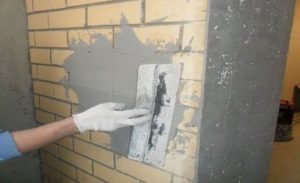
Tiling: profitable and simple
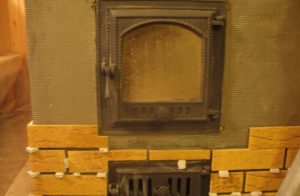 One alternative would be to use a material such as ceramic tiles. If we talk about the composition and its production, then it is worth noting the presence of colored clay. Most often, the front part is decorated with decorative painting. If you want to save money, you can pay attention to a terracotta product. For lovers of a large assortment of designs, this option is considered the most acceptable; moreover, it is budget-friendly. You can choose an image that imitates natural stone or brick. If you are serious about the reliability of the structure, then it is advisable to purchase one of the types of ceramics - clinker. Its properties are explained by the fact that it contains the highest quality types of clay. Therefore, even sudden changes in temperature are not able to break the surface. And to give maximum durability, you can use a special composition. In addition to the described advantages, we can also talk about the simplicity of the process. Before you start, you just need to plaster and reinforce the entire surface.
One alternative would be to use a material such as ceramic tiles. If we talk about the composition and its production, then it is worth noting the presence of colored clay. Most often, the front part is decorated with decorative painting. If you want to save money, you can pay attention to a terracotta product. For lovers of a large assortment of designs, this option is considered the most acceptable; moreover, it is budget-friendly. You can choose an image that imitates natural stone or brick. If you are serious about the reliability of the structure, then it is advisable to purchase one of the types of ceramics - clinker. Its properties are explained by the fact that it contains the highest quality types of clay. Therefore, even sudden changes in temperature are not able to break the surface. And to give maximum durability, you can use a special composition. In addition to the described advantages, we can also talk about the simplicity of the process. Before you start, you just need to plaster and reinforce the entire surface.
Working with stone
In modern times, this type of cladding is becoming increasingly popular. When choosing a building material, you can pay attention to the fact that both artificial and natural stone are available for use. But both the first and second have not only a pleasant appearance, but also high fire resistance. Over a long period of use, when the appearance of the material is no longer as fresh as it was originally, you can easily update it by painting it in a new shade. Now that we have sorted out some of the nuances, we can move on to the steps to be completed:
- The first step is to prime the entire existing surface.
- Next, you need to lay it from the bottom of the structure. It is important at this point to use a building level so as not to make a mistake with the height.
REFERENCE! A special solution is also used in the work. It usually consists of sand, cement and various additives.
- Some people add fine drywall particles. It is needed for unstitching seams.
- Then the stone is cut using a grinder and a disc. It should be set to low speed. This principle must be observed to avoid possible ingress of splinters.
